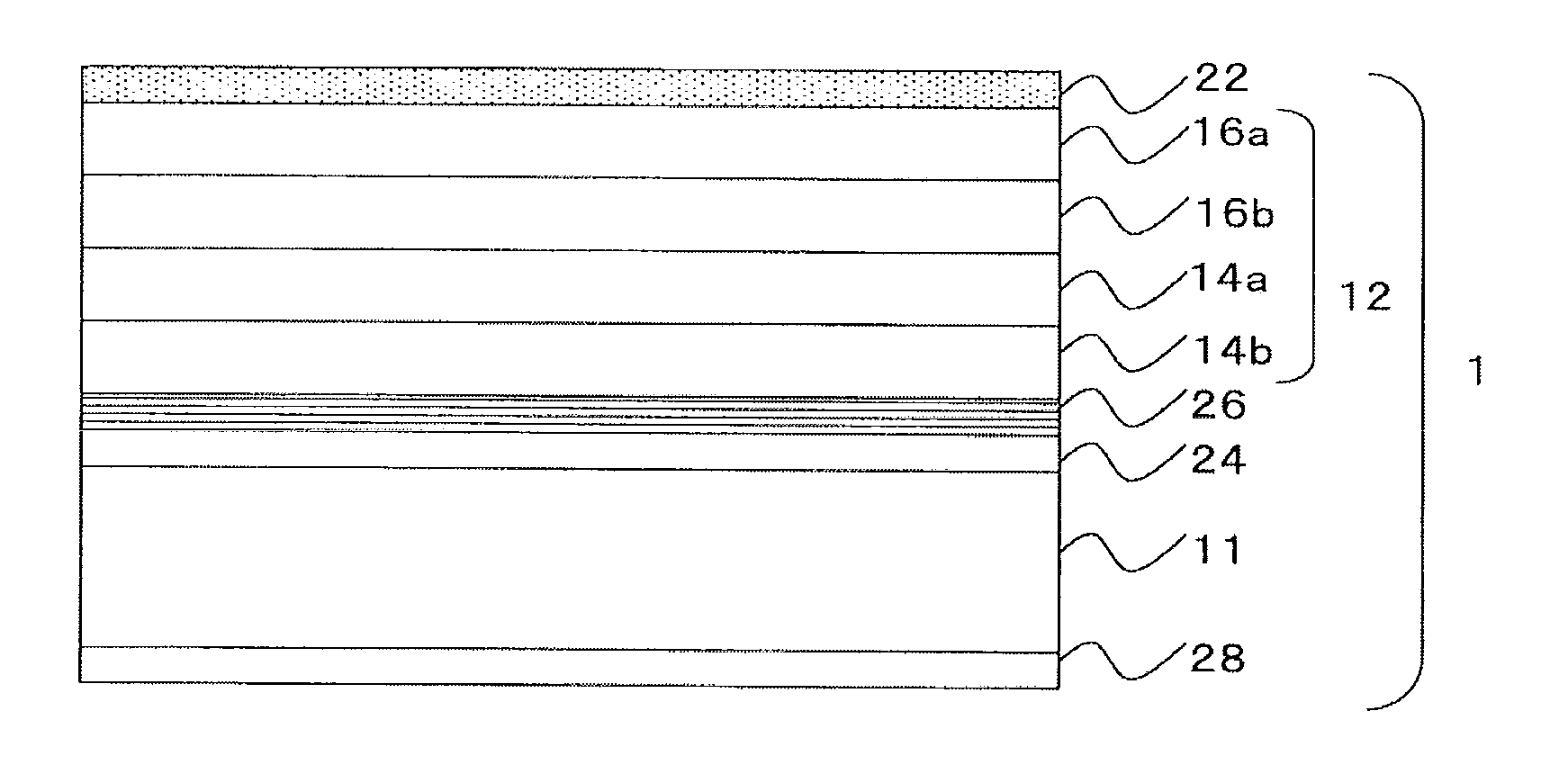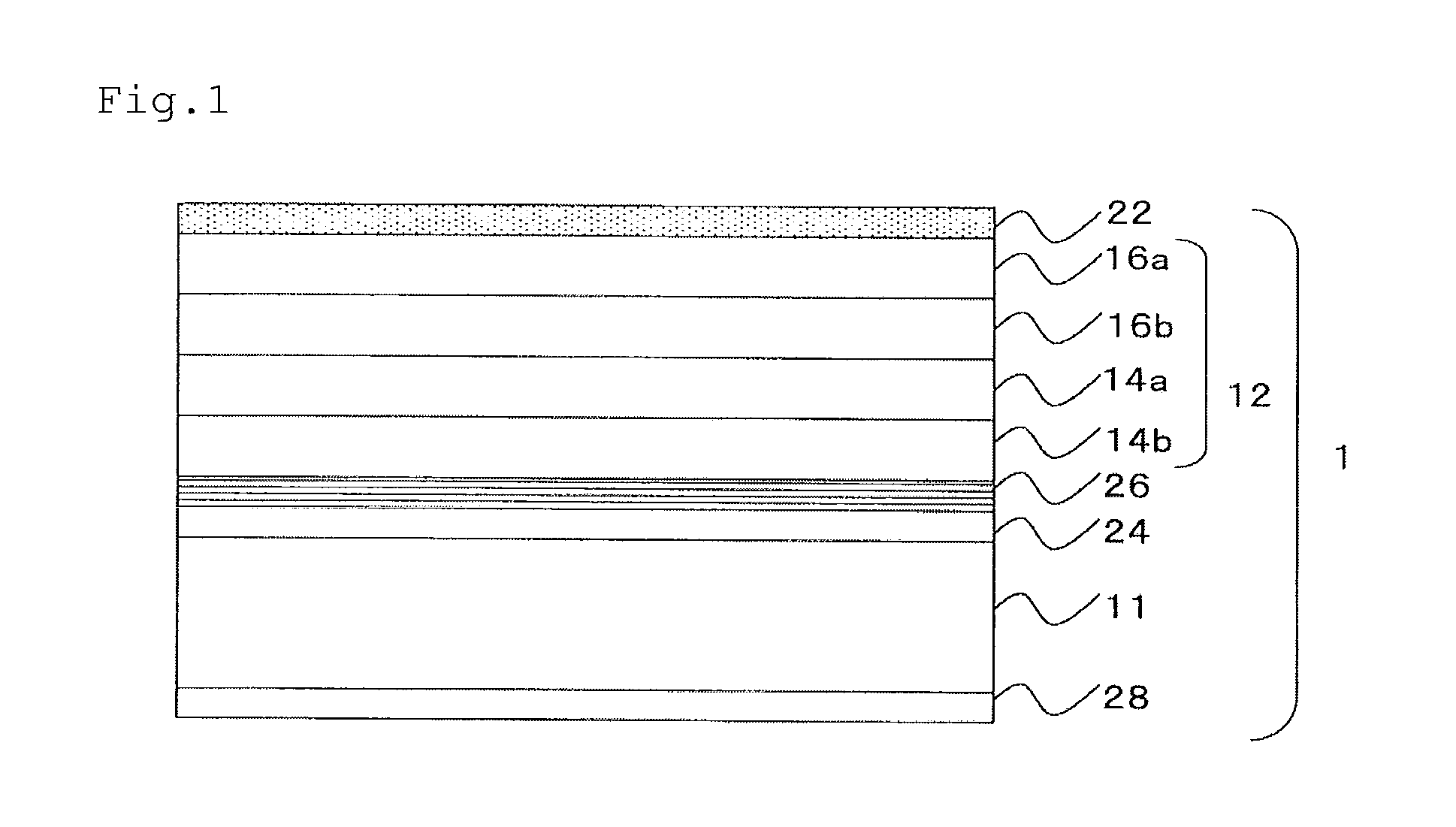Infrared light reflector
a technology of infrared light and reflector, which is applied in the direction of instruments, polarising elements, lighting and heating apparatus, etc., can solve problems such as coating failure, and achieve the effect of enhancing film strength
- Summary
- Abstract
- Description
- Claims
- Application Information
AI Technical Summary
Benefits of technology
Problems solved by technology
Method used
Image
Examples
example 1
[0164]Using a wire bar, the back layer coating liquid (U) was applied onto a PET film (by FUJIFILM, having a thickness of 188 μm) so that the thickness of the coating layer after dried could be 0.5 μm. Subsequently, this was heated at 150° C. for 10 minutes, dried and solidified to form a back layer.
[0165]Next, using a wire bar, the underlayer coating liquid (S) was applied to the surface of the back layer-having PET film, as prepared in the above, on the side thereof not having the back layer so that the thickness of the coating layer after dried could be 0.25 μm. Subsequently, this was heated at 150° C. for 10 minutes, dried and solidified to form an undercoat layer.
[0166]Next, using a wire bar, the alignment layer coating liquid (H) was applied onto the formed undercoat layer so that the thickness of the coating layer after dried could be 1.0 μm. Subsequently, this was heated at 100° C. for 2 minutes, dried and solidified to form an alignment layer. The alignment layer was rubbed...
example 2
[0192]Liquid crystal composition coating liquids (R21), (R22), (L21) and (L22) were prepared in the same manner as that for the liquid crystal composition coating liquids (R11), (R12), (L11) and (L12), except that the polyfunctional polymerizable compound (1) (molecular weight: 513) was changed to the following polyfunctional polymerizable compound (2) (molecular weight: 336). The viscosity at 23° C. of the coating liquids was 2.9 mPa·s, 2.9 mPa·s, 3.2 mPa·s and 3.1 mPa·s, respectively.
Polymerizable Compound (2):
[0193]
[0194]An infrared light reflector of Example 2 was produced according to the same process as in Example 1, except that the liquid crystal composition coating liquids (R21), (R22), (L21) and (L22) were used in place of (R11), (R12), (L11) and (L12).
example 3
[0195]Liquid crystal composition coating liquids (R31), (R32), (L31) and (L32) were prepared in the same manner as that for the liquid crystal composition coating liquids (R11), (R12), (L11) and (L12), except that the polyfunctional polymerizable compound (1) was changed to the following polyfunctional polymerizable compound (3) (molecular weight: 424). The viscosity at 23° C. of the coating liquids was 3.6 mPa·s, 3.5 mPa·s, 3.9 mPa·s and 3.8 mPa·s, respectively.
Polymerizable Compound (3):
[0196]
[0197]An infrared light reflector of Example 3 was produced according to the same process as in Example 1, except that the liquid crystal composition coating liquids (R31), (R32), (L31) and (L32) were used in place of (R11), (R12), (L11) and (L12).
PUM
 Login to View More
Login to View More Abstract
Description
Claims
Application Information
 Login to View More
Login to View More - R&D
- Intellectual Property
- Life Sciences
- Materials
- Tech Scout
- Unparalleled Data Quality
- Higher Quality Content
- 60% Fewer Hallucinations
Browse by: Latest US Patents, China's latest patents, Technical Efficacy Thesaurus, Application Domain, Technology Topic, Popular Technical Reports.
© 2025 PatSnap. All rights reserved.Legal|Privacy policy|Modern Slavery Act Transparency Statement|Sitemap|About US| Contact US: help@patsnap.com



